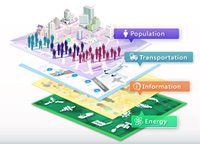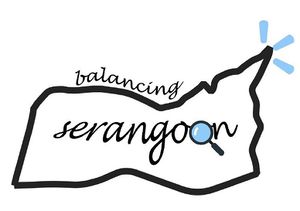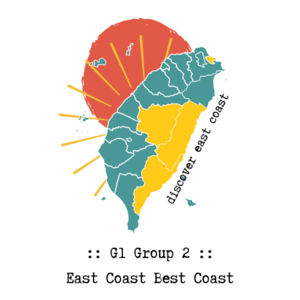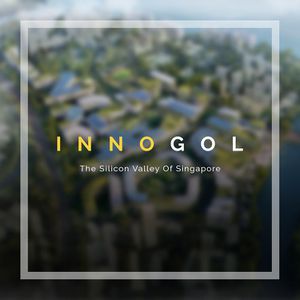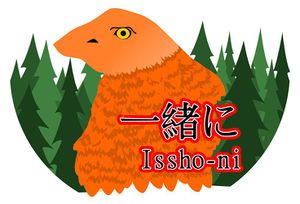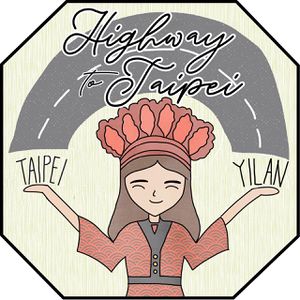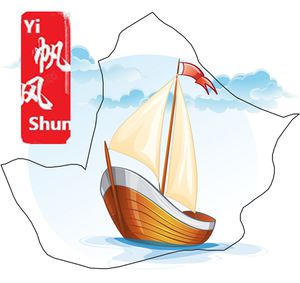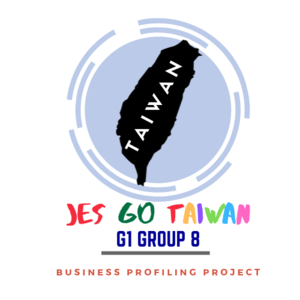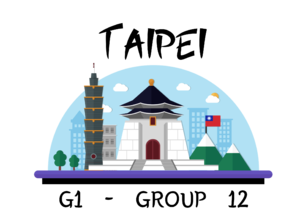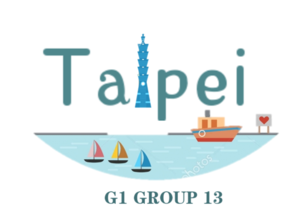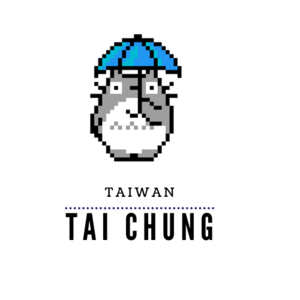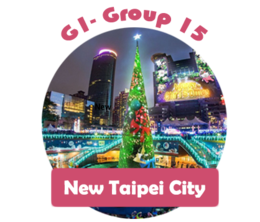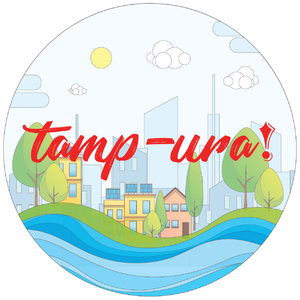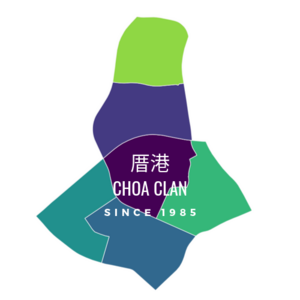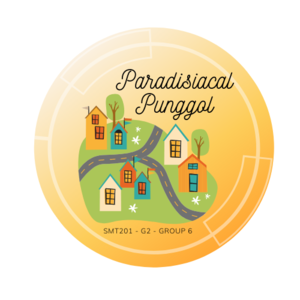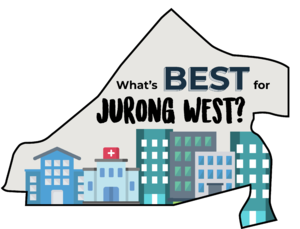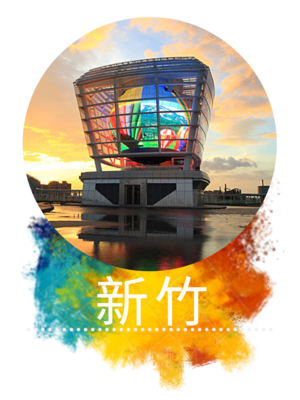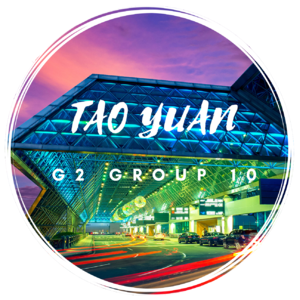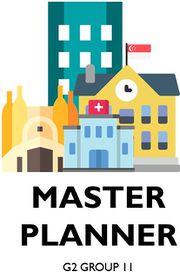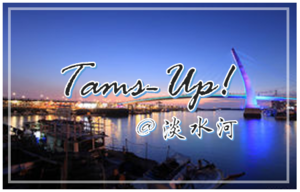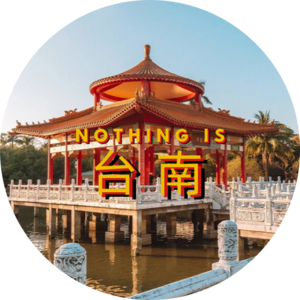Project Groups
|
|
|
|
|
|
Project Groups
Please change Your Team name to your project topic and change student name to your own name.
G1
| Project Team | Project Title/Description | Project Artifacts | Project Member |
|---|---|---|---|
|
G1-Group01
|
Team d-Ragoon Serangoon is named after a bird commonly found in the riverine swamps around the Serangoon River and is located in the central part of Singapore, within the North-eastern region. It mainly consists of residential buildings with a total land area of 10.1km² and total population size of 116,310 as of June 2019. The area attracted more people after Nex, a shopping mall connected to a bus interchange, and the Serangoon Circle Line MRT station were built in 2010.
|
| |
|
G1-Group02
|
East Coast Best Coast Our project focuses on the operations of 11 different stores of a multi-national Food and Beverage (F&B) chain along the east coast of Taiwan. The stores are located in 4 different counties, namely Keelung, Nantou, Hualien and Taitung. Our project aims to perform business profiling on these stores by comparing them between (1) the current service areas, as provided by the client; (2) service areas defined by kilometer radius from the stores; and (3) service ares defined by drive time from the stores. Our team aims to deliver insightful analysis and business recommendations on operational strategies to our client through this project. |
| |
|
G1-Group03
|
Innogol Our project, Innogol, a unique portmanteau coined by combining the words “Innovation” and “Punggol”, aims to discover how Punggol’s land use has been transformed from Master Plan 2008 to 2014. Given the planning area’s relatively young population, a more thorough analysis will be conducted on the Economically Active Population (EAPs), who are the main segment of the population that the vision of Punggol Digital District is targeting. Concurrently, the aged and young population will also be taken into account to ensure that there are adequate amenities and facilities catered to them. The purpose of this project is to make a comprehensive assessment of the current and future land use changes and provide recommendations to bridge the gaps in land use provisions, if we identify any. (For a more detailed outline, please refer to our proposal) |
| |
|
G1-Group04
|
Issho-ni Situated at the north of Singapore, Yishun was previously known as Nee Soon—the Mandarin romanisation of 林义顺 (Lim Nee Soon). Nee Soon was a successful industrialist, being a rubber and pineapple magnate in the region. For a start, our team will study the various changes (land use, population, employment, etc.) in the planning area between 2008 and 2014. Also known as an ‘ulu’ area in the city-state, we aim to further analyse the area to gain important insights that might explain for such impression and recommend extra changes in hopes to dismiss the negativity revolving around it. Our logo—a hawk on a backdrop of a forest, has its ways that it came about. The accipitrine creature equipped with excellent eyesight (which is made out of the boundary of Yishun) represents the visionary outlook we strive to have to increase the overall welfare of the planning area in the future. The forest is dedicated to the person Yishun is named after, specifically the surname 林 which means ‘forest/jungle’ in the language. |
| |
|
G1-Group05
|
Highway to Taipei Our team has collaborated with an International F&B Chain (IFC) to analyse 14 of their outlets in Taipei — the capital of Taiwan, and Yilan — a county lining the northeastern coast of Taiwan. By analysing the sales performance of the different outlets, we formulated insightful deductions that provides our client with recommendations and strategies to optimise their current sales performance, as well as factors of consideration for future planning of stores. |
| |
|
G1-Group06
|
Yi帆风Shun Our project, Yi帆风Shun, aims to highlight the changes in land use and population demographics from the year 2008 to 2014. Discover the transformation that Yishun’s land use has been through and gain insights into the decision-making process that goes behind the creation of Singapore’s master plan that is produced every 5 years. Going further, we would like to suggest changes in land use for a master plan in the year 2024. The master plan will be based on estimates of the population demographics that exist in 2024. We hope the proposed master plan will bring about an improved quality of life for the residents of Yishun in 2024. |
| |
|
G1-Group07
|
Jurong EASE By comparing the changes in land use and population demographics of Jurong East from 2008 and 2014, we can observe the developments of Jurong East and investigate how Jurong East can be further developed to allocate resources more efficiently for 2019 and beyond. Jurong EASE aims to increase the ease of visiting, living and working in Jurong East by proposing new or changes in land use. |
| |
|
G1-Group08
|
JES GO TAIWAN Our project theme focus is business profiling where the client is a leading international food chain based in Taiwan. Our team's analyses will be targeting on the four counties namely Changhua, Yunlin, Chiayi County, and Chiayi City and they are located at central and southern Taiwan. In order to provide our client a better idea on their market positioning against their other well known competitors, the project will also look into the presence of POIs (Point-of-Interests) within the trade area and how they can affect the 13 individual outlet's sales performance. To derive the trade area of each outlet, our team has digitized them using the data provided by the client. After forming this as the foundation of the data preparation process, other forms of analyses are then conducted. Ultimately, our team aims to draw interesting insights and create useful web maps application that are beneficial to our client. Our project report will contain the comprehensive details of the analyses and recommendations for the client. |
| |
|
G1-Group09
|
Team Pèng-gol About Punggol: It is a relatively young region with a lot of exciting projects targeted at there, spanning an area size of 9.57 km2 (3.69 sq mi) and a residential population of 161,570. There are multiple explanations on how the name Punggol is derived. In Malay, it means “hurling sticks at the branches of fruit trees to bring the fruits down to the ground” . An alternative interpretation would be “a place where fruits and forest produce are offered for wholesale”, implying that Punggol was a rural, agricultural area. The third explanation involves Wak Sumang, the man who started the Punggol village. According to his great grandson, while Wak Sumang was clearing his garden, a large tree was burnt and its branch, known as punggur in Malay, fell on his hut. He then decided to name the village “Punggur”.
|
| |
|
G1-Group10
|
Tai-Hao-Le International Food Chain (IFC) is a leading brand in its sector, with over 18000 outlets worldwide and an ever-growing presence in the global market. In Taiwan alone, IFC has over 240 branches and are constantly expanding. However, as the franchise grows bigger, so does its challenges. One of the challenges involves the lack of an analysis to efficiently compare the performance of each chain to one another. Leveraging on this fact, our group aims to digitalise the data and conduct in-depth analysis on each branch. We hope to track the performance of each chain in relation to Point-Of-Interests surrounding each chain, uncovering and comprehending phenomena, with the aid of spatial data. |
| |
|
G1-Group11
|
Ang Mo Ang Mo Kio is the 8th most populated planning area in the entire city state. Despite being a mature housing estate, one with more amenities and better accessibility, Ang Mo Kio still has immense potential for development. This project would re-evaluate the current developments in Ang Mo Kio, taking into consideration the future needs of Ang Mo Kio residents. |
| |
|
G1-Group12
|
Hut of the North The objective of our project is to conduct an analysis on 13 stores in Taiwan to give useful insights that will aid us in creating an effective business strategy. All 13 stores are located within New Taipei City, and the respective trade areas cover majority of the city. In our analysis, our aim is to find any correlation between the sales of each store with POIs within their trade areas. We would compare the stores with higher sales with the stores with lower sales to identify which POIs in the trade areas that best explain the difference in sales. Based on our findings, we would make recommendations to our client. |
| |
|
G1-Group13
|
Journey To The East of Taipei Our team will focus on perform trade area analysis on 13 stores located in Taipei and New Taipei cities and identify how different types of Point of Interest (POI) influences the performance of each outlet. As well as provide meaningful insights that will lead to effective marketing strategies to optimize the stores’ performance and better positioning of new stores in the future. |
| |
|
G1-Group14
|
To-To-Ro-Chung Group 14 will be performing a trade area analysis in the region of Taichung for international F&B business. From Taichung, 12 stores and its surrounding point of interest will be digitalized before any form of analysis can proceed. The goal of the project would be to determine what are the most crucial factors which contribute to sales and armed with the knowledge to make effective data-driven actions. These actions include the relocation or building of a new store to tap into potential high yielding sale trade areas. Given the information on each store's customer demographics, the F&B company will be able to perform targeted marketing. |
| |
|
G1-Group15
|
Memes We will perform trade area analysis on 13 stores located in New Taipei city by using QGIS and discover insights that can be used in designing business strategies, optimizing the performance of the stores and planning the location of new stores in the future. |
| |
|
G1-Group01
|
Project Title Abstract of not more then 300 words. |
| |
|
G1-Group01
|
Project Title Abstract of not more then 300 words. |
| |
|
G1-Group01
|
Project Title Abstract of not more then 300 words. |
|
G2
| Project Team | Project Title/Description | Project Artifacts | Project Member |
|---|---|---|---|
|
G2-Group01
|
Taoyuan! Project Taoyuan! is a collaboration with an International Food Chain (IFC) that has more than 16,000 outlets in over 100 countries and with a staff team of around 300,000 members. This project focuses on specific 11 outlets in the region of Taoyuan. Currently, the IFC does not rely on any Geospatial Information System (GIS) tool to analyze the status of its outlets. This project aims to utilize data provided by the IFC and through using QGIS, an open-source GIS tool, explore three main aspects: buffering, sales revenue and network analysis. |
| |
|
G2-Group02
|
TAMP-URA! Project Tamp-ura! uses geospatial data to analyse the Tampines planning area. With a total land area of 20.89 km2, Tampines is one of the most prominent districts in the East and the 3rd most populated town in Singapore. It has been designated as a regional centre since the early 1990s. Today, Tampines Town has 5 subzones - Tampines North, Tampines West, Tampines East, Simei, Xilin, and has significant potential for development. |
| |
|
G2-Group03
|
CHOA CLAN Back in the mid 19th century, many Chinese settlers had arrived in Singapore and set up their villages across the island, many along rivers in the north. Their villages were named after the Chinese clans that controlled the part of the river they settled on — a practice common in China. The head of the clan would be called a kangchu (港主), and the river settlement that he heads would be called a chukang (厝港). Choa Chu Kang was named after the Choa clan, which settled near the Berih River (Sungei Berih).
|
| |
|
G2-Group04
|
New Taipei / Taipei / Keelung A Food and Nutrition Board (FNB) International Food Chain is interested in improving their current methods of analysis. Using the various functions available on QGIS to delineate and digitize the 13 trade areas based in the northern part of Taiwan, we are able to help the FNB business to conduct analysis based on their correlation between various factors, such as the Point-Of-Interests (POIs) and Competitors, and the Sales Revenue of the 13 trade areas where this FNB business operates in. By doing so, we aim to optimize the performance of each store located in these trade areas and highlight the benefits of adopting the QGIS method so that the FNB business can make a more informed business decision in the future based on the insights gathered from QGIS. |
| |
|
G2-Group05
|
Kaohsiung / Pingtung Through our project, we aim to conduct a trade area analysis on the 11 trade areas delineated by our client. Within the 11 trade areas, a total of 13 stores are spread across 2 regions, namely Kaohsiung and Pingtung. In our analysis, we identify relevant points of interest (POIs) within the respective trade areas and evaluate whether the quantity and types of POIs have any correlation with sales attained by the respective stores. With insights obtained from our analysis, decision-makers can make more informed decisions. For example, when performing site selection for future expansion plans, decision-makers can take into account the number of POIs within the targeted expansion area and determine whether the investment to expand into the new area is worthwhile based on the number of POIs present. Additionally, to drive sales and marketing efforts, the identification of existing POIs within the trade areas can help the business to devise targeted marketing strategy which can help drive an increase in sales. |
| |
|
G2-Group06
|
Paradisiacal Punggol What comes to your mind when you first heard the word ‘Punggol’? Most people would probably say that it's going to be a “hype” place to live in as the government is doing many redevelopments in the area just because it's pretty much located to malls and modern architecture objects. Some would even say that getting a BTO at Punggol would rather an investment for the future. Now, we might have observed pixelated motivation behind what makes a good place to live, not based on property value but one that fits the needs of residents. This project will resort to the revaluation of current developments in Punggol by emphasising to the future needs of the Punggol citizens. We will also take into account the current plan for Punggol under the Draft Masterplan 2019 to bring in insights and recommendations to better cater to the needs of Punggol residents. Our priority will be ensuring that in 5-10 years down the road, Punggol can be a place to live, work and play. |
| |
|
G2-Group07
|
What's Best for Jurong West Jurong West is a planning area that has gone through a lot of development over the years, and it continues to evolve through the development of the Jurong Lake District. Through several geospatial analytical techniques, data analytics, visualisation and projection, enhanced by our own secondary research, we will be gaining a comprehensive understanding of the land use allocation and demographics of Jurong West. With the insights gained, we will formulate improvements, amendments and new additions to Jurong West in order to determine What's Best for Jurong West. |
| |
|
G2-Group08
|
Kaohsiung and Ping Tung
As part of our module, Geographic Information Systems for Urban Planning, we are collaborating with an international food chain to analyse 15 trade areas located in Taiwan's Kaohsiung and Ping Tung region. The international food chain currently uses manual methods of delineating their trade area which is largely time-consuming. Therefore we aim to propose new and faster methods using QGIS to delineate the trade area. We will also be analysing the points of interest (POI) within each trade area to determine the correlation between the POIs and sales revenue. To do so, we will be using simple and multiple linear regression analysis. The results of this project will provide the international food chain with the necessary geographic data analysis to make an informed decision regarding their sales and marketing strategy.
|
| |
|
G2-Group09
|
Hsinchu
|
| |
|
G2-Group10
|
Project Peach As part of Singapore Management University Smart City Management and Technology’s programme, our team undertook a module in the Geographic Information Systems and took the chance to collaborate with a restaurant in Taiwan. The project aims to analyse trade area of the chain outlets, and operations in Taiwan. With data given to us, we will use geospatial analytics to garner insights and find out interesting trends about their sales in relation to differences in geographic properties. This will be done by analysing trade areas of the different branches, taking into account factors such as concentration of different key places of interest, geographic differences within the trade area affecting the reach to customers and presence of overlapping trade area. Current methods used by the restaurant are imprecise and unsuitable for detailed analysis. With geographic information systems software QGIS, we’ll be able to precisely plot and delineate the trade area boundaries and compile information to help the restaurant in their decision analysis. |
| |
|
G2-Group11
|
Master Planner This project extends beyond what we have learnt in class and serves as a first hand experience for us to conduct Geospatial Analysis as well as constructing a GIS-enabled Planning model by integrating open data sets provided by the Government and other open sources. We seek to explore the changes that Tampines have underwent since 2008, and thereby propose improvements to better serve the population in this particular planning area of Singapore. We are hopeful that the insights garnered will be helpful to the current as well as future residents of Tampines.
|
| |
|
G2-Group12
|
TaiHua Given the opportunity to work with a F&B restaurant in Taiwan, TaiHua focuses on 13 outlets that are located in Taichung and Changhua. With the use of QGIS software and tools like excel and SAS EG, we hope to bring meaningful analysis to our client and provide them with useful recommendations. |
| |
|
G2-Group13
|
City Planners Our client is well-established in the food and beverage (F&B) industry internationally and has multiple shop outlets across Taiwan. They are looking to improve their bottom line and would like us to explain the reasons for the difference in sales figures for different franchised outlets, whether factors like nearby presence of entertainment or being nearer to other food and beverage outlets would affect their sales position. Currently, their trade area is done using sketches on maps and cuts through rivers and forested areas. However, as the hand-drawn trade area is static in nature, our client is unable to create any further analysis on their own. Thus, we aim to digitalize their hand-drawn trade areas for further analysis of our client's trade area based on their outlets using Points of Interests (POIs). Our client is looking to maximise their profitability in their franchise outlets by looking into their various trade areas and to determine the best model that can explain the sales performance. |
| |
|
G2-Group14
|
Tams Up! @ 淡水河 With the rare chance to collaborate with a well-known restaurant chain and international franchise, our group has been tasked to come up with business profiles for each of the restaurants assigned to us, whereby majority of them lie in close vicinity to the Tamsui River. Through the use of QGIS - a geographic information system application that supports the viewing, editing and examination of geospatial data, we will start off by delineating and digitizing the trade areas for our assigned restaurants, then proceed on to extract out the relevant Points Of Interests in those areas that will affect the company's business. We will then gather all these data collected, and produce comprehensive evaluations and valuable insights through well-rounded analysis for the company to gain a better understanding of their business and further improve it. Though many challenges lie ahead, we believe that this is truly a 'Tams-Up' opportunity! |
| |
|
G2-Group15 Nothing is 台南
|
Nothing is 台南 Nothing Is Tainan originates from a collaboration with an International Food & Beverage franchise (referred to as the Client) present in Taiwan. Having assigned 16 Store Locations of our Client which all are located within Tainan City province, our project aims to develop purposeful digitized maps to our Client through the Geo-spatial Information Systems Software QGIS, providing our Client insights and discoveries on the trade areas of its store locations, ultimately finding optimal recommendations and solutions on how our Client is able to perform better in Tainan City. *(太难: Too Hard in English - A Pun on similar Chinese Pronunciations for 'TAI NAN') |
| |
|
G1-Group01
|
Project Title Abstract of not more then 300 words. |
|
| Team | Members | |||||||||||||||||
|---|---|---|---|---|---|---|---|---|---|---|---|---|---|---|---|---|---|---|
| City Planners | Tan Wei Long Ryan | Lim Jia Khee | Khong Lee Han | |||||||||||||||
| East Coast Best Coast | Chong Yun Yu | Brendan Ong Sin Kai | Heng Bing Chow | |||||||||||||||
| Your Team name | Au Xue Qi Vanessa | Nicole Ng Linn | Ng Poh Yeng | |||||||||||||||
| Issho-ni | Kang Hui Yun | Lee Jung Jae | Wang Youjin | |||||||||||||||
| Your Team name | Student name | Student name | Student name | Student name | Student name | Student name | ||||||||||||
| Yi帆风Shun | Lee Hui Yun | Tan Hui Qin | Sabrina Liau Ying Ying | |||||||||||||||
| Your Team name | Student name | Student name | Student name | Student name | Student name | Student name | ||||||||||||
| Tams Up! @ 淡水河 | Krystal Ong | Ng Qi Hui | Peh Jin An | |||||||||||||||
| SSLL | Lois Lek | Siti Salihah | Student name | |||||||||||||||
| Three Horrible Guys | Kelvin Chia | Eugene Choy | Linus Cheng | |||||||||||||||
| 必勝族 | Charmine Foo Zhi Min | Neo Yin Li Amelia | Tan Zi Ying | |||||||||||||||
| Nothing is 台南 | Jerome Quah Wei Ren | Lu Zhi Mao | Mabelle Tham Shi Qin | |||||||||||||||
| To-To-Ro-Chung | Nigel Poon Wei Chun | Tan Jian Hao | ||||||||||||||||
| Your Team name | Lim Zhong Zhen, Timothy | Lok Ying Cheng, Sheryee | Tu Yang Lin | |||||||||||||||
| Hut of the North | Lim Shen Jie | Leandra Lee | Aaron Lee | |||||||||||||||
| Tamp-Ura! | Soh Bai He | Lim Qiu Hui Candy | Goh Jia Xin Genice | |||||||||||||||
